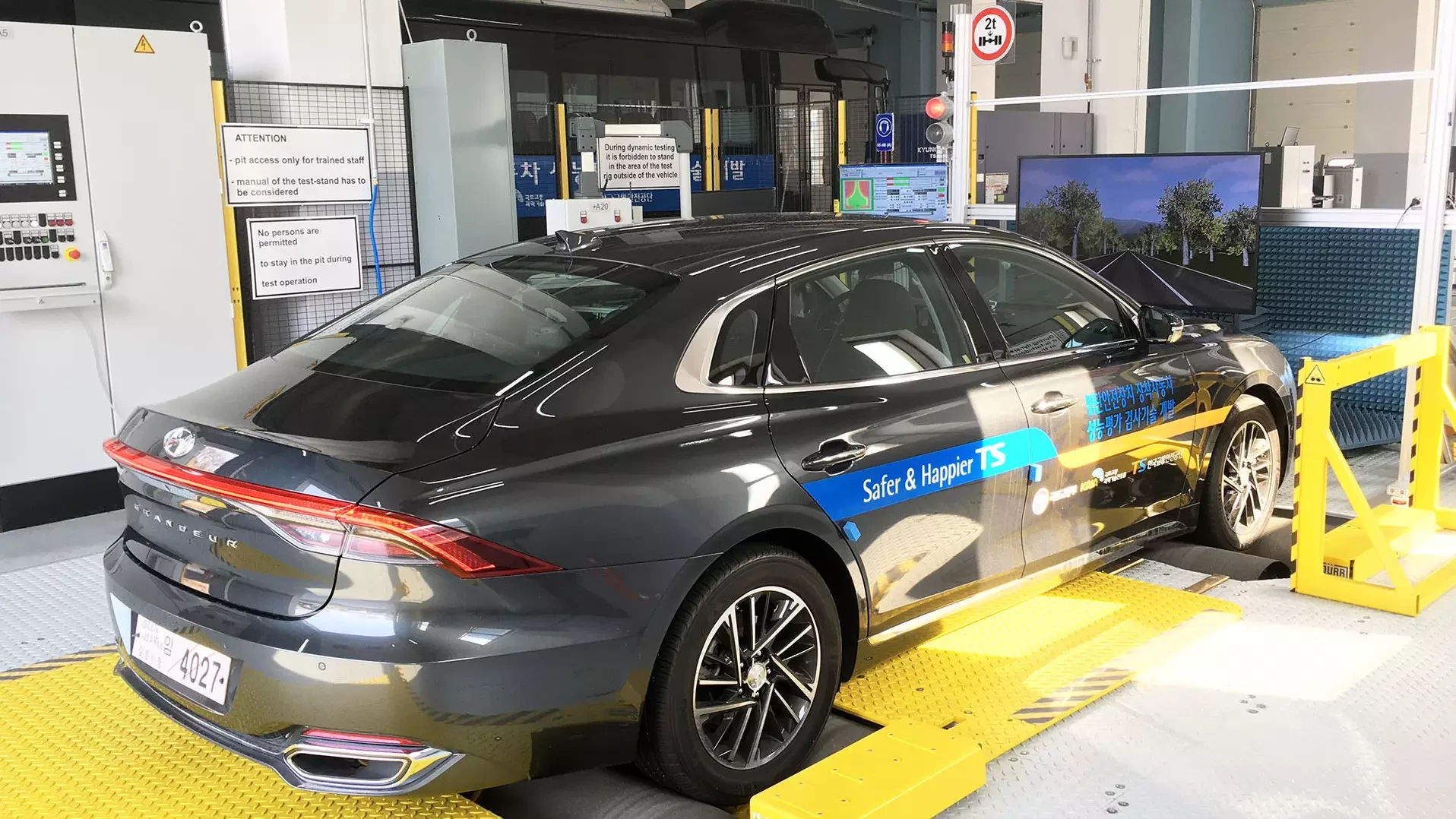Unlike with conventional roll test stands, the x-road curve permits free driving with steering movements to simulate cornering. Laser measurement technology detects the steering angle of the front axle, while a pivoting roller unit automatically compensates the movements of the front wheels. The vehicle thus remains in the center of the test stand, even at high speeds, regardless of the steering wheel position. In combination with the virtual environments developed by dSPACE, typical traffic situations are simulated to elicit a response from the sensors installed in the vehicle. This enables the functionality of driver assistance systems to be tested.
Dürr Assembly Products demonstrated what this looks like in practice to KOTSA officials on its test stand in Püttlingen. For the first time, the experts used a random vehicle off the street for this. They simulated two scenarios: The vehicle is in danger of leaving its lane, therefore a steering intervention is needed. The vehicle has to perform an emergency stop in response to the vehicle in front braking. Appropriate realistic traffic situations were depicted on a monitor. Radar signals simulated other traffic users to match the display on the monitor.
For Timo Wallscheid, x-road Product Line Manager at Dürr Assembly Products, the successful commissioning of the x-road curve is a major step in the testing of partially and fully autonomous vehicles: “For the first time, the actual reaction of safety-related systems on a vehicle that had not been prepared in any way was tested in a simulated traffic situation. The steerable x-road curve test stand from Dürr and the simulation environment from dSPACE complemented each other perfectly.”
Dirk Berneck, Senior Manager Engineering Services at dSPACE, views the new complete validation system from Dürr and dSPACE as decisive for the testing and homologation of highly automated vehicles by testing organizations, and explains: “Imaging sensors like radars and cameras are playing an ever-greater role here. dSPACE’s highly precise traffic and environment simulation with a comprehensive library of flexibly executable driving situations is an efficient way of validating vehicle and sensors on compact test stands.”
The public authority KOTSA is responsible for the PTI (Periodical Technical Inspection) in Korea. The x-road curve was installed and commissioned at its headquarters in Gimcheon, and officially presented to the public in mid-March. The event was attended by representatives from the Korean Ministry for Land, Infrastructure and Transport. The guests also included the Hyundai Motor Company and Mercedes-Benz Korea as well as reporters and representatives from other testing organizations like the German KÜS (an automotive monitoring organization made up of independent professional automotive experts).
Sensors and actuators in autonomous and semi-autonomous vehicles are extremely complex. On top of this, different software versions have to be compatible. Dürr Assembly Products, a subsidiary of the Dürr Group, therefore expects that test stands like the x-road curve will be indispensable in the future, especially as legislation will require such tests as proof of operational safety.


